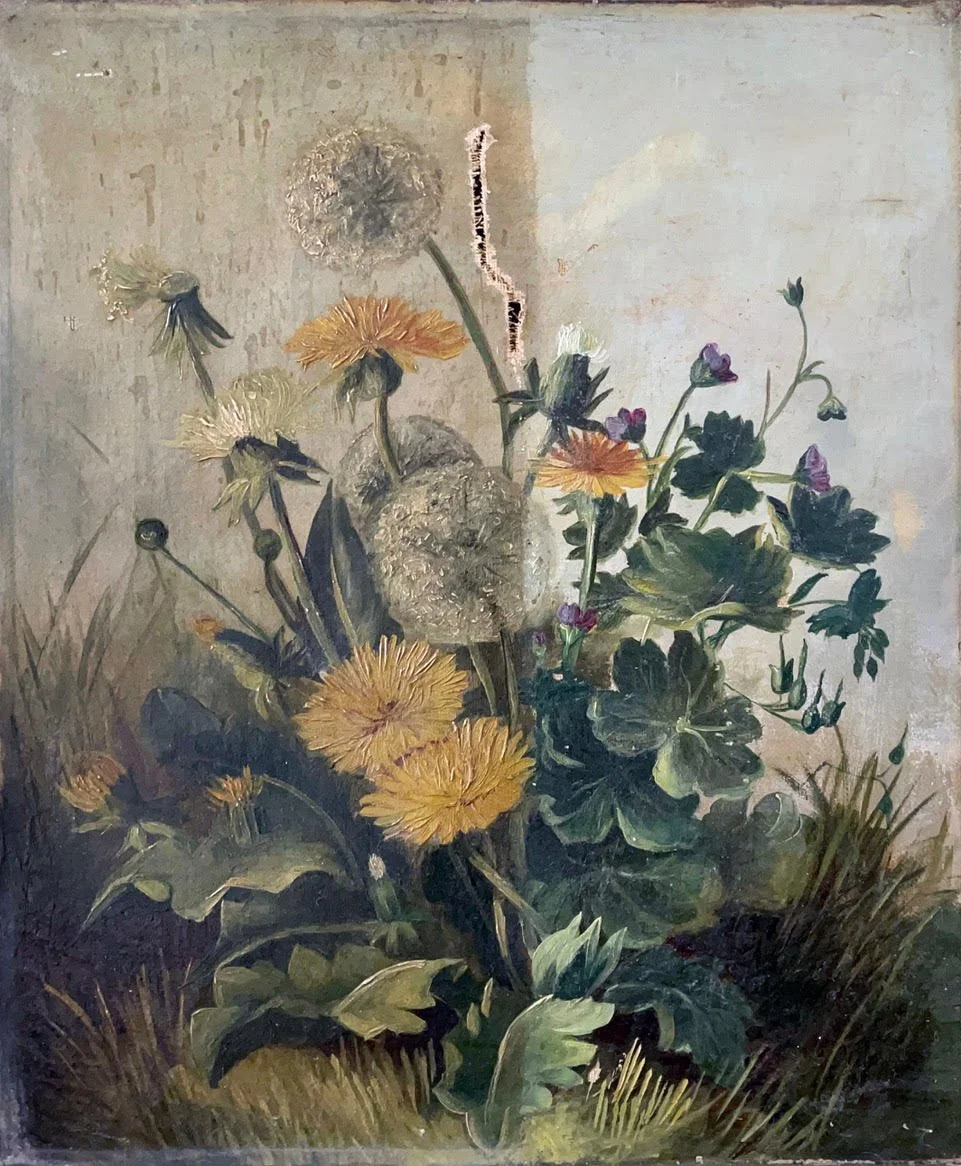The Art Restoration and Art Conservation Dilemma
Art restoration and art conservation are both practices that aim to preserve works of art, but they have distinct goals and approaches.
Art restoration refers to the practice of returning a work of art to its original condition, or as close to it as possible. This can involve cleaning, repairing, and in some cases, reconstructing missing parts of the artwork. The goal of art restoration is to make the artwork look as close to its original condition as possible. Restoration is often done to make the artwork more visually pleasing, and potentially to thereby increase its aesthetic and monetary value.
A partially cleaned and repaired 19th Century floral still-life. Compliments of: Datum Fine Art Conservation, Andover, CT.
A fully restored 19th Century still-life. Compliments of Datum Fine Art Conservation, Andover, CT.
Art conservation, on the other hand, is the practice of preserving a work of art in its current condition, without attempting to restore it to its original appearance. The goal of art conservation is to slow down or stop the deterioration of an artwork, and to ensure that it remains stable. The idea of art conversation is to preserve the artwork, through stabilization and potentially thereby preserve its value.
In short, art restoration is about making the artwork resemble as close to its original state as possible, while art conservation is about preserving the artwork as it is. With each approach, the ideal is to be as minimal in terms of treatment and reversible as possible, meaning that the artwork is left in the best possible state for future conservators or restorers.
Slow Down: The Art Restoration and Conservation Plastic Surgery Analogy
At Vallot Auctioneers having sold and handled tens of thousands of works of art over two decades we have seen all kinds of damage and we are often asked by collectors what to do when dealing with damaged or deteriorated artworks.
It’s helpful to think about art restoration and conservation like plastic surgery. Both can be beneficial; however, a collector can spend a lot of money and do the very opposite of what they sought to achieve. Just like with plastic surgery, taken too far art restoration can overcorrect a condition, resulting in the restoration becoming more apparent than the artwork itself. Likewise, a bad conservation can have the opposite effect too, exacerbating a condition or make future conservation impossible.
Develop Your Own Philosophy as to When to Restore or Converse
Robert Datum of Datum Fine Art Conservation in Andover, Connecticut, when discussing the topic aptly observed about antiquities: “We tend to be more willing to accept these conditions. In an ancient sculpture, we can view and appreciate a sculptures inherent beauty even while the arms are missing.” Collectors should likewise think about how future generations might engage a work of art before proceeding with a restoration.
A collector might also consider the Japanese philosophy of wabi-sabi. The wabi-sabi worldview holds the notion that nothing lasts, is finished, or is inherently perfect. In wabi-sabi, restoration and conservation doesn’t shy away from dings and dents acquired over time. Instead, the beauty of a piece lies in its imperfections and the imperfections or damage are left in a more and not less obvious state. Just as smile lines as we age enhance a happy-go-lucky attitude toward life, the wear and tear on a painting and the natural aging of materials can accentuate an artwork by showing its history. Leaning into the works impermanence can allow all of its qualities to shine through, however, at some point an adverse condition can dominate a work.
More Tips on How to Choose Your Approach to Art Restoration and Conservation
When considering whether to restore or conserve an artwork ask yourself, if the condition distracts or adds to how you contemplate it. Consider the risks of conservation or restoration; a qualified restorer or conservator will be upfront about the risks inherent in any restoration or conservation. Consider the effect on value of conservation or restoration; we are often asked to consult on this very question. Finally, slow down, live with an artwork. Get curious and think about what draws you to it. Overtime, a condition will either consistently draw your attention away or it will gradually become part of how you see and experience a work of art.


